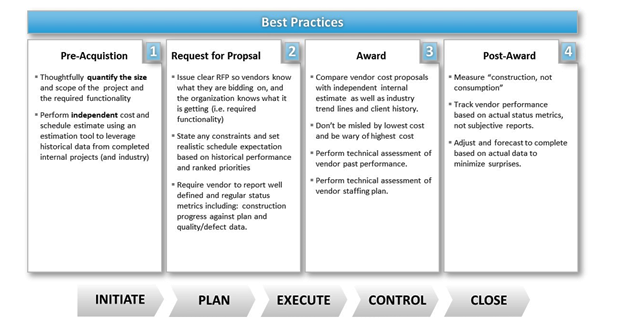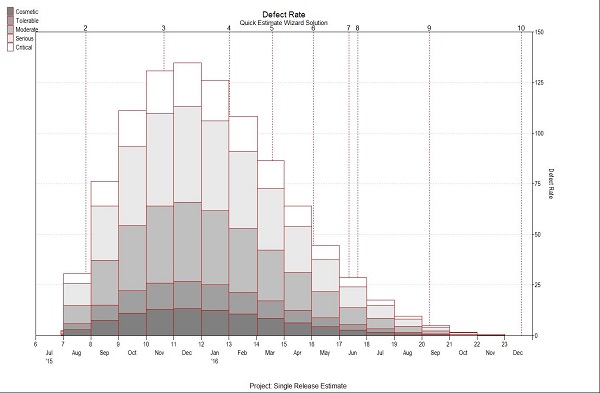How Can We Make Annual IT Budgeting Easier?
One of the things I hear from many c-level managers is how difficult it is and how long it takes to generate reliable resource plans at the enterprise level. Many organizations take months to generate their annual budgets and often times the negotiated budgets end up being unrealistic. To fix this problem we need to combine good capacity planning with good demand management. There are a number of project portfolio management tools to help with the capacity planning. The problem is the numbers will be off if we don’t get the demand management part right.
There are world class demand management tools available that can be used by business decision makers. These tools allow us to come up with empirically based, reliable project and enterprise level resource plans. In the SLIM-Estimate view below you can see the forecasted effort by role by month.
The view below shows the plan being sanity checked with industry data so we can better negotiate our budgets with confidence.
The even bigger news is that we can automatically feed our empirically based demand numbers into our PPM tools, making the job of capacity planning much easier and more reliable. In the view below you can see two separate plans, represented in side by side columns. The original PPM plan was updated automatically from an empirically based and sanity checked plan from SLIM-Estimate.




